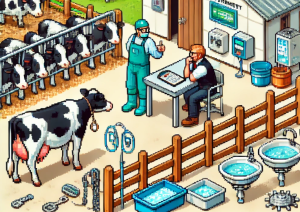
How Researchers and Lawmakers Can Collaborate for Better Decisions
Although sometimes it doesn’t feel like it, policymakers can face immense pressure to make decisions quickly. But how can they ensure the best available evidence informs these decisions? A recent study explores this very question, examining how structured collaboration between researchers and policymakers can lead to better use of scientific evidence in legislative processes.
The Study: Bringing Science to Capitol Hill
Researchers designed an innovative experiment involving the U.S. Congress to see if formal outreach and collaboration could change how lawmakers use research in their work. The study focused on child and family policy issues, areas where research can significantly impact legislation.
The experiment used a model called the Research-to-Policy Collaboration (RPC). This model connects researchers with congressional offices through a series of structured steps:
- Policy Identification: Understanding lawmakers’ goals and needs.
- Network Development: Bringing together researchers with relevant expertise.
- Capacity Building: Training researchers on how to engage with policymakers effectively.
- Needs Assessment: Identifying specific information lawmakers require.
- Rapid Response Meetings: Facilitating direct interactions between researchers and lawmakers.
- Strategic Planning: Developing plans for ongoing collaboration.
- Ongoing Collaboration: Continuously providing research support as needed.
Results: More Science, Better Laws
The study found that congressional offices participating in the RPC were more likely to value and use research in their legislation. Specifically, these offices reported a 7% greater appreciation for research that helps them understand policy issues compared to those not involved in the program. Additionally, these offices were more likely to introduce bills that included research evidence.
Interestingly, the study also highlighted the positive impact on researchers. Those involved in the RPC increased their knowledge of policy engagement and felt that their involvement improved their research. This mutual benefit underscores the importance of fostering relationships between the scientific community and policymakers.
Why This Matters
In an era where public policy decisions can have profound and lasting impacts, ensuring the best available evidence informs these decisions is crucial. For public health practitioners and researchers, the findings highlight the potential of structured engagement strategies to influence policymaking positively.
The RPC model’s success demonstrates that with the right support and collaboration, researchers can play a vital role in shaping public policy. This is particularly important in areas like public health, where evidence-based decisions can save lives and improve community well-being.
Overcoming Barriers
Despite the promising results, the study also sheds light on the challenges researchers face when engaging with policymakers. The fast-paced nature of policy environments can be daunting, as researchers are accustomed to a more deliberate approach to decision-making. The RPC model addresses these challenges by providing researchers with the tools and support they need to navigate the policy landscape effectively.
Additionally, the study found that the RPC helped mitigate researchers’ concerns about the political misuse of their work. By fostering trusting relationships and focusing on collaborative problem-solving, the model encourages a more constructive use of research evidence in policy debates.
The Broader Implications
While the study focused on child and family policy, the principles and strategies of the RPC model can be applied to other policy areas and levels of government. The success of the RPC at the federal level suggests that similar approaches could be effective in state and local governments, as well as international contexts.
This study serves as a call to action for the scientific community. If we want policymakers to use evidence-based interventions, we must also use evidence-based strategies to support them. The RPC model provides a blueprint for how this can be achieved, highlighting the need for ongoing research and refinement to optimize these strategies further.
Join the Conversation
- How do you think the RPC model could be adapted for use in local government settings?
- What are some challenges you have faced in your efforts to engage with policymakers, and how did you overcome them?
We’d love to hear your thoughts! Share your experiences and impressions in the comments below or on social media using the hashtag #ResearchToPolicy.
Conclusion
The study on the Research-to-Policy Collaboration model provides valuable insights into how structured engagement between researchers and policymakers can enhance the use of scientific evidence in legislative processes. By fostering relationships and providing targeted support, the RPC model helps bridge the gap between science and policy, ensuring that the best available evidence informs decisions. This is a critical step towards more effective and impactful public policies, benefiting communities and society as a whole.
Rad Resource!
Be sure to check out all the work of the Research-to-Policy collaboration here!
Join the Community – Get Your Weekly Public Health Update!
Be a health leader! Subscribe for free and share this blog to shape the future of public health together.



